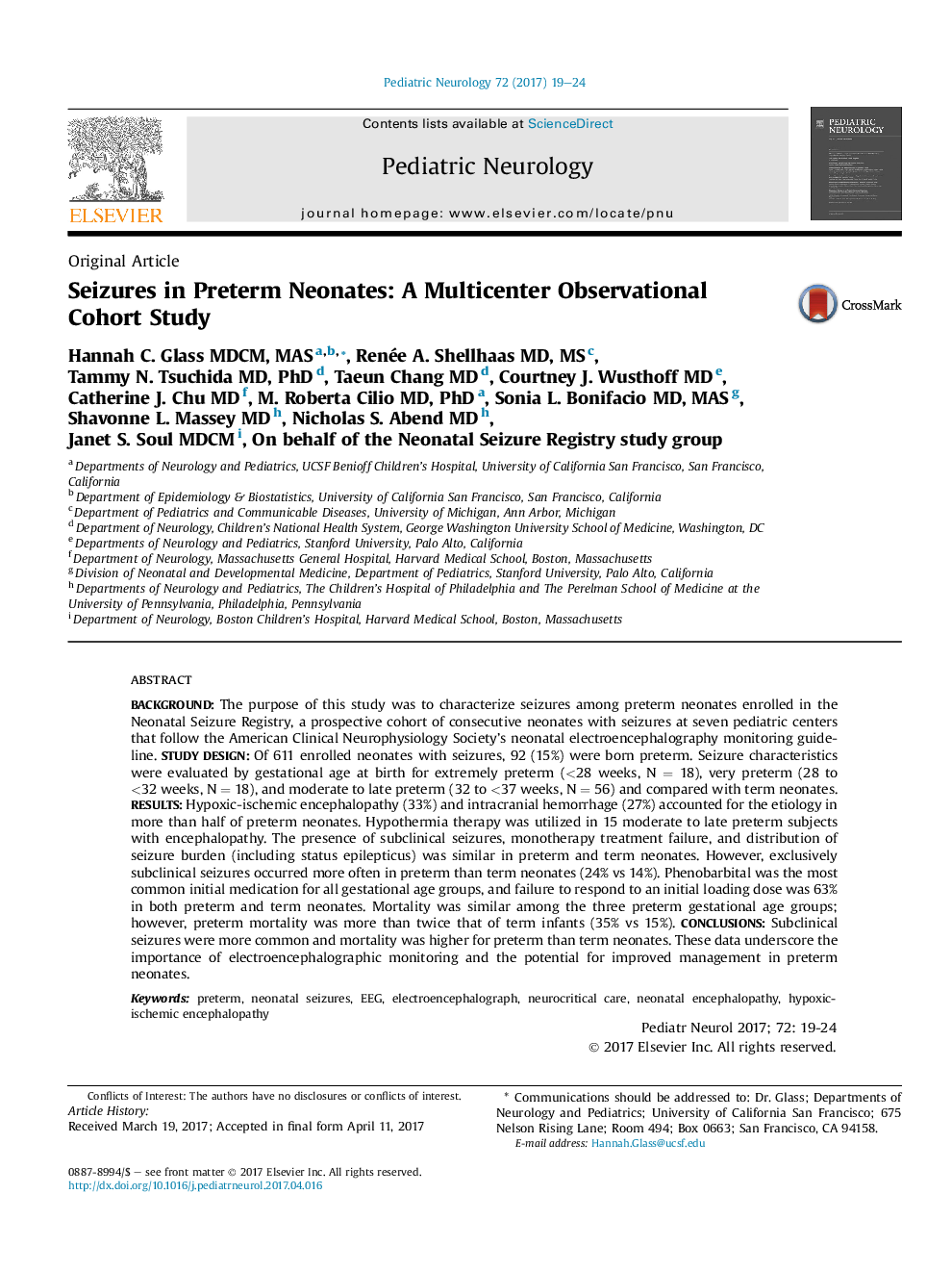| Article ID | Journal | Published Year | Pages | File Type |
|---|---|---|---|---|
| 5633090 | Pediatric Neurology | 2017 | 6 Pages |
BackgroundThe purpose of this study was to characterize seizures among preterm neonates enrolled in the Neonatal Seizure Registry, a prospective cohort of consecutive neonates with seizures at seven pediatric centers that follow the American Clinical Neurophysiology Society's neonatal electroencephalography monitoring guideline.Study DesignOf 611 enrolled neonates with seizures, 92 (15%) were born preterm. Seizure characteristics were evaluated by gestational age at birth for extremely preterm (<28Â weeks, NÂ =Â 18), very preterm (28 to <32Â weeks, NÂ =Â 18), and moderate to late preterm (32 to <37Â weeks, NÂ =Â 56) and compared with term neonates.ResultsHypoxic-ischemic encephalopathy (33%) and intracranial hemorrhage (27%) accounted for the etiology in more than half of preterm neonates. Hypothermia therapy was utilized in 15 moderate to late preterm subjects with encephalopathy. The presence of subclinical seizures, monotherapy treatment failure, and distribution of seizure burden (including status epilepticus) was similar in preterm and term neonates. However, exclusively subclinical seizures occurred more often in preterm than term neonates (24% vs 14%). Phenobarbital was the most common initial medication for all gestational age groups, and failure to respond to an initial loading dose was 63% in both preterm and term neonates. Mortality was similar among the three preterm gestational age groups; however, preterm mortality was more than twice that of term infants (35% vs 15%).ConclusionsSubclinical seizures were more common and mortality was higher for preterm than term neonates. These data underscore the importance of electroencephalographic monitoring and the potential for improved management in preterm neonates.
